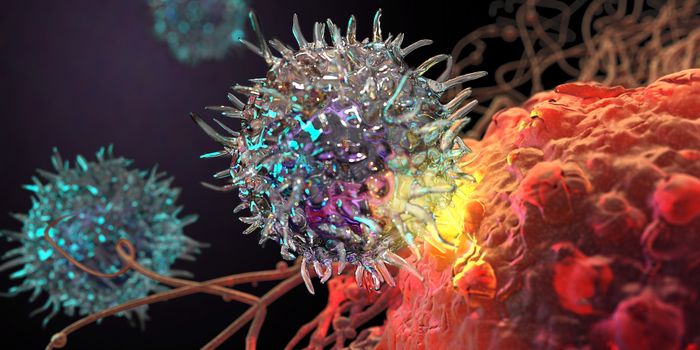Ovarian cancer accounts for 3% of all cancers among women and is the 5th leading cause of cancer deaths for women in the U.S. The most aggressive form of ovarian cancer, the high-grade serous carcinoma (HGSC), accounts for 70% of ovarian cancer cases. Only 1 in 6 patients lives 5 or more years after diagnosis with an HGSC.

A very innovative, collaborative effort between groups at Johns Hopkins and the Pacific Northwest National Laboratory combined genomic and proteomic data from a total of 169 ovarian tumors. This approach is so innovative because cancer is usually considered a disease of the genome, with mutated genes being expressed as oncogenic, dysfunctional proteins. However, looking at complete profile of expressed proteins, known as the proteome, provides even more insights into disease pathology than just looking at the genome.
The Johns Hopkins team analyzed a set of ovarian tumor samples that had previously sequenced by The Cancer Genome Atlas (TCGA) that they chose based on their degree of homologous recombination deficiency and characterized by mutations in BRCA1, BRCA2, or PTEN. Mutations in these genes is also well-known to cause breast cancer, as well as increase cancer risk and severity. By looking at ovarian tumors with the same mutations as some breast cancers, the researchers were hoping to find enough similarities in the functional proteomes of these two cancers to open the door to the possibility of ovarian cancer patients receiving the same drug regimen that breast cancer patients have.
The other team in the study based at Pacific Northwest National Laboratory looked at another set of ovarian tumors that had also been sequenced by TCGA. Instead of looking at samples with certain mutations or deficiencies, their strategy was to search for biological factors that could contribute to survival time.
Using mass spectrometry, the two teams identified 3586 proteins common to all of the 169 tumors analyzed. Sifting through all these proteins was obviously a massive undertaking, but it provided many novel insights into the aggressive HGSC. A characteristic of cancer in general, but particularly of HGSCs, is the appearance of copy-number variations. Through this massive proteogenomic experiment, the two teams identified sections of chromosome 2, 7, 20, and 22 that were prone to increased copy-number and lead to increased expression of more than 200 proteins. Many of these overexpressed proteins are involved in cell movement and immune system function; both of the processes are very connected to cancer progression.
The researchers also saw that the very diverse genome rearrangements of the different samples converged on similar signaling pathways. And for the main goal of the team from Pacific Northwest National Laboratory, they were able to identify certain signaling pathways that were associated with short survival. These results would not have been possible to find by just looking at the genome, proving the importance of the proteome in cancer research.
Sources:
EurekAlert and
Cell









